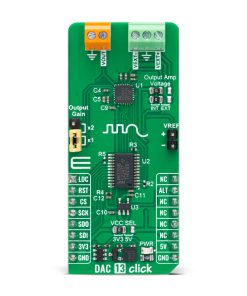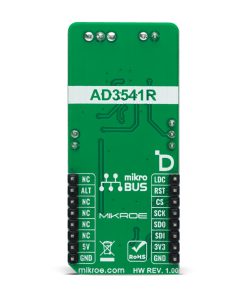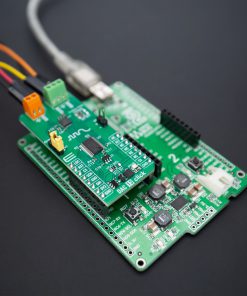DAC 13 Click
R2,300.00 ex. VAT
DAC 13 Click is a compact add-on board providing highly accurate digital-to-analog conversion. This board features the AD3541R, a low drift, single channel, 16-bit accuracy, voltage output digital-to-analog converter (DAC) from Analog Devices. The AD3542R operates with a fixed 2.5V reference, communicates with the host MCU through the SPI interface, and can be configured for multiple voltage span ranges. Also, it enables the selection of the power supply of the internal trans-impedance amplifier as well as its gain, which scales the output voltage. This Click board™ represents an excellent choice for DAC applications in data acquisition systems, process control equipment, programmable voltage sources, and many more.
DAC 13 Click is fully compatible with the mikroBUS™ socket and can be used on any host system supporting the mikroBUS™ standard. It comes with the mikroSDK open-source libraries, offering unparalleled flexibility for evaluation and customization. What sets this Click board™ apart is the groundbreaking ClickID feature, enabling your host system to seamlessly and automatically detect and identify this add-on board.
Stock: Lead-time applicable.
| 5+ | R2,185.00 |
| 10+ | R2,070.00 |
| 15+ | R1,955.00 |
| 20+ | R1,881.40 |


























